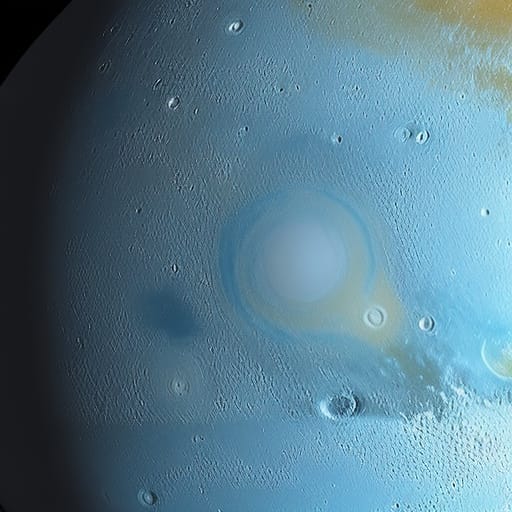Space: Uranus

Uranus is the seventh planet from the Sun and the third-largest in our solar system. It is notable for its unique tilt and bluish appearance. Here are the important aspects of Uranus:
Distance and size: Uranus is located about 2.9 billion kilometers (1.8 billion miles) from the Sun. It has a diameter of approximately 50,724 kilometers (31,518 miles), making it roughly four times wider than Earth.
Composition: Uranus is an ice giant, with an atmosphere composed mainly of hydrogen (about 82%) and helium (about 15%), as well as a significant amount of methane (about 2.3%). Methane absorbs red light, giving the planet its bluish color. Beneath its atmosphere, Uranus has an icy mantle made up of water, ammonia, and methane ices, surrounding a rocky core.
Orbital and rotation period: Uranus takes approximately 84 Earth years to complete one orbit around the Sun. Its rotation period is about 17.24 hours. The planet's axis is tilted at an extreme angle of 97.77 degrees, causing it to rotate almost perpendicular to its orbital plane.
Temperature: Uranus has an average temperature of about -216°C (-357°F) in its upper atmosphere. Despite being farther from the Sun than Neptune, Uranus is the coldest planet in our solar system due to its lack of internal heat.
Surface features: Uranus's atmosphere is relatively featureless, with occasional faint cloud bands and storms. The extreme tilt of the planet results in extreme seasonal variations, with each pole experiencing 42 years of continuous sunlight followed by 42 years of darkness.
Magnetic field: Uranus has an unusual magnetic field, which is tilted at a 59-degree angle relative to its rotational axis. The magnetic field is generated by the motion of charged particles in its icy mantle.
Moons: Uranus has at least 27 known moons, named after characters from the works of William Shakespeare and Alexander Pope. The five largest moons, Miranda, Ariel, Umbriel, Titania, and Oberon, are composed primarily of ice and rock.
Rings: Uranus has a faint system of 13 known rings, composed mainly of dark, icy particles. The rings were discovered in 1977, making Uranus the second planet known to have rings after Saturn.
Exploration: Uranus has been visited by only one spacecraft, Voyager 2, which conducted a flyby in 1986. The data collected by Voyager 2 provided much of our current knowledge about the planet, its moons, and its rings.
Observing Uranus: Uranus is just barely visible from Earth with the naked eye under ideal conditions but is better observed with binoculars or a telescope. When viewed through a telescope, its bluish color and some of its larger moons become visible.
Mythology: Uranus is named after the ancient Greek god of the sky, who was the father of Cronus (the Roman Saturn) and the grandfather of Zeus (the Roman Jupiter). The planet's name follows the tradition of naming planets after deities from classical mythology.